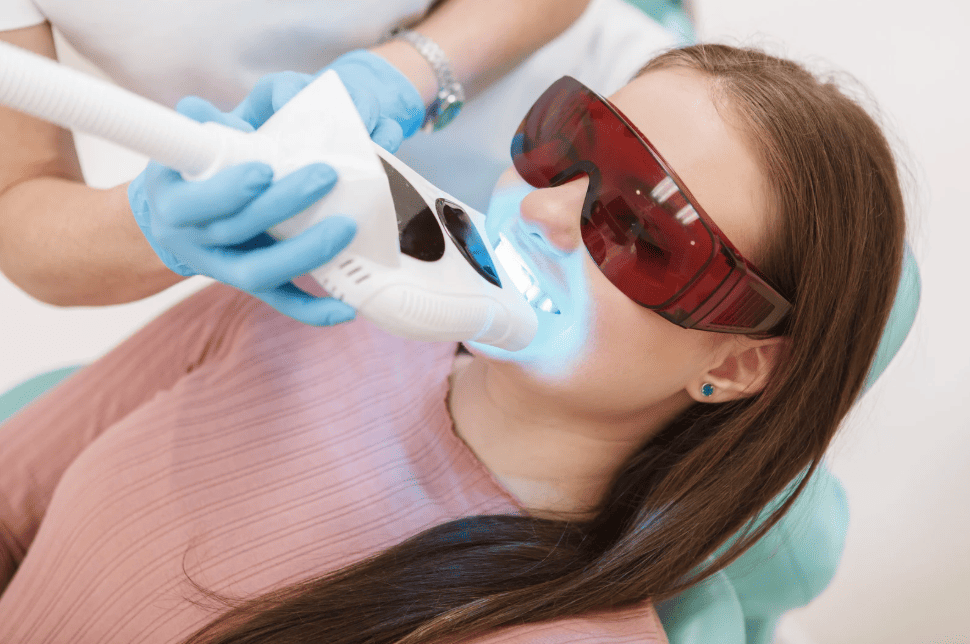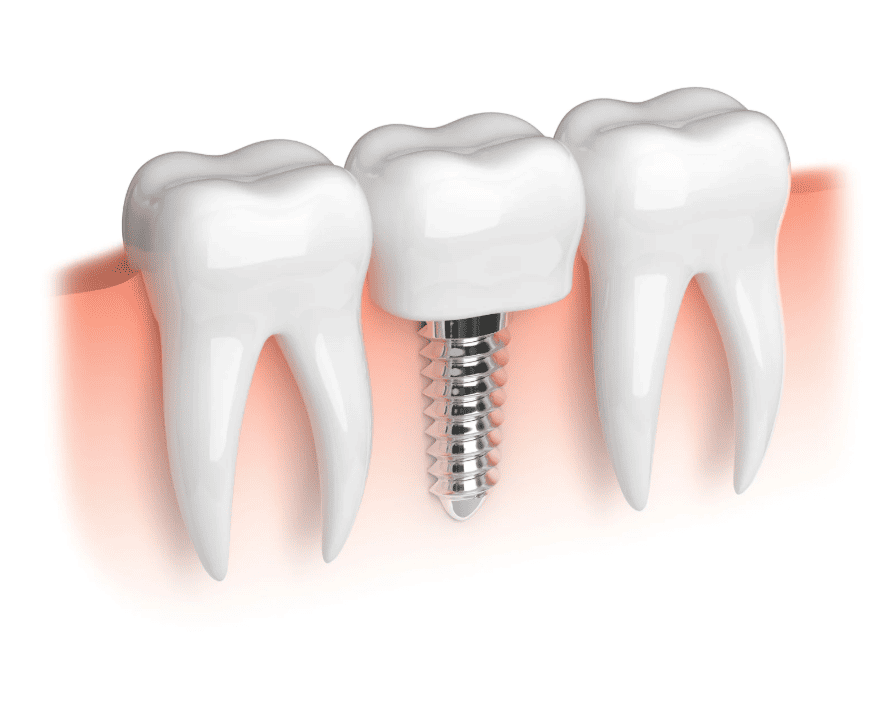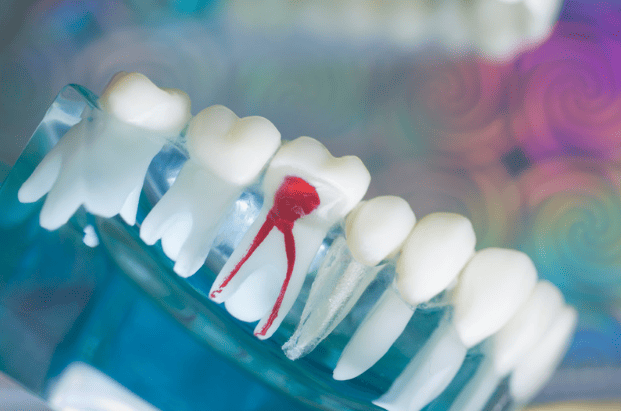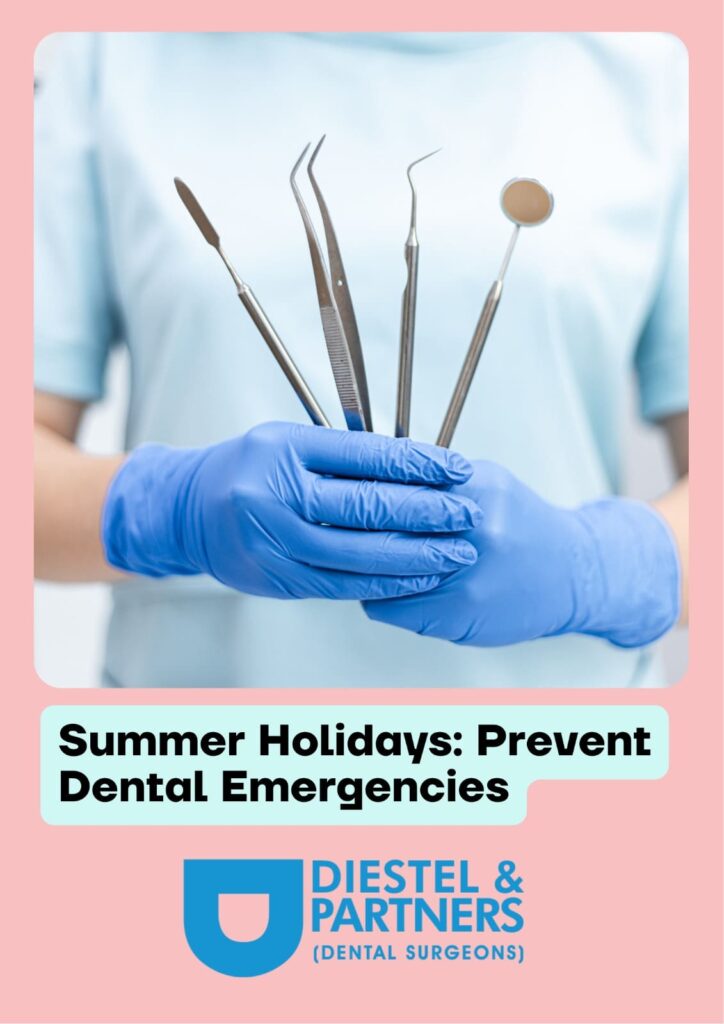
Gum Disease: Causes, Symptoms, Treatments, and Prevention
Gum Disease (Periodontal Disease) is a common yet often overlooked oral health condition that affects the gums and the supporting structures of the teeth. If left untreated, it can lead to tooth loss and systemic health issues, such as heart disease and diabetes.
This article provides an in-depth exploration of the causes of gum disease and offers a simple self-assessment to evaluate your gum health. We detail treatment options, from early-stage professional cleanings to advanced surgical interventions, and share practical prevention tips. Learn how to protect your oral health, prevent periodontal disease, and maintain a confident smile!
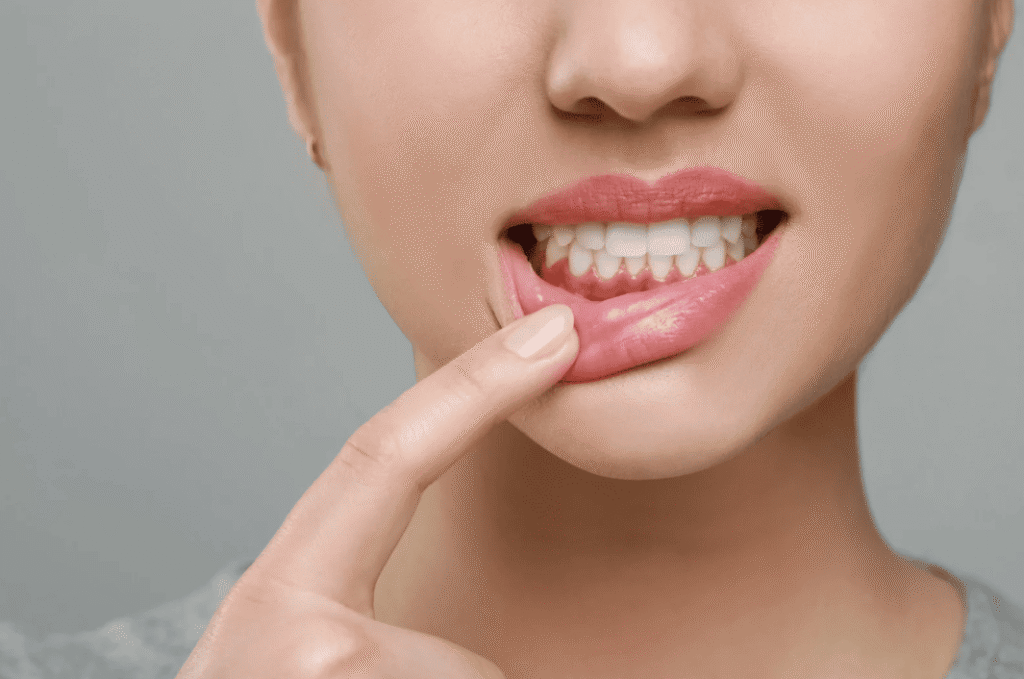
Causes of Gum Disease: Hidden Threats to Oral Health
Gum disease is a chronic inflammatory condition triggered by bacterial infections that affect the gums, periodontal ligaments, and alveolar bone—the structures that support your teeth. Without proper management, it can result in tooth mobility, tooth loss, and even impact overall health, contributing to conditions like cardiovascular disease and diabetes. Understanding its causes is critical for prevention and early intervention. Below are the primary factors contributing to periodontal disease:
Poor Oral Hygiene
Irregular or improper brushing and flossing allow dental plaque—a sticky film of bacteria and food debris—to accumulate on teeth and along the gumline. If not removed, plaque hardens into tartar (calculus), irritating the gums and triggering inflammation, making it the leading cause of periodontal disease.
Long-Term Smoking Habits
Smoking not only weakens the oral immune system but also reduces blood flow to the gums, impairing their ability to fight bacterial infections. Research indicates that smokers are 2–6 times more likely to develop periodontal disease than non-smokers, with poorer treatment outcomes.
Chronic Health Conditions
Individuals with diabetes, particularly those with uncontrolled blood sugar, have a compromised immune system, making gum tissue more vulnerable to bacterial invasion. Additionally, conditions like cardiovascular disease and rheumatoid arthritis have a bidirectional relationship with periodontal disease, worsening each other.
Hormonal Fluctuations
Hormonal changes during pregnancy, puberty, menopause, or while taking oral contraceptives can make gums more sensitive to bacteria, increasing the risk of gingivitis or periodontal disease. In pregnant women, untreated periodontal disease may contribute to adverse outcomes like preterm birth or low birth weight.
Genetic Predisposition
Genetic factors can influence susceptibility to periodontal disease. If you have a family history of gum disease, your risk may be higher than average, necessitating proactive preventive measures.
Other Risk Factors
Stress: Chronic stress weakens the immune system, reducing the gums’ ability to resist infection.
Medication Side Effects: Certain medications, such as anti-epileptics or immunosuppressants, can cause gum overgrowth or dryness, increasing the risk of periodontal issues.
Nutritional Deficiencies: Lack of essential nutrients like vitamin C, vitamin D, or calcium can weaken gum tissue and alveolar bone, compromising oral health.
Why Understanding Causes Matters
Recognizing these triggers empowers you to take targeted preventive actions. For instance, improving oral hygiene, quitting smoking, or managing chronic conditions can significantly reduce your risk of periodontal disease. Take a moment to assess your lifestyle—are you unknowingly setting the stage for gum disease?
🦷 Protect Your Gum Health and Restore Your Confident Smile!
📍 Whether you’re concerned about bleeding gums, bad breath, or loose teeth, or simply want to prevent gum disease, the expert team at Diestel & Partners Dental Clinic offers personalized periodontal assessments and treatment plans to restore healthy gums and safeguard your oral and overall health!
Our Periodontal Services Include:
- Comprehensive Oral Evaluation: Utilizing advanced 3D imaging technology for precise diagnosis of periodontal disease severity, ensuring targeted treatment plans.
- Personalized Treatment Plans: From professional cleanings to scaling and root planing or surgical interventions, tailored to your condition with transparent explanations of procedures and costs.
- Long-Term Care Guidance: Professional oral hygiene techniques and dietary recommendations to prevent periodontal disease recurrence and maintain a healthy smile.
Why Choose Us?
- ✅ Expert Periodontal Team: Led by experienced periodontal specialists with extensive clinical expertise, ensuring effective and safe treatments.
- 🖥️ Cutting-Edge Technology: Employing laser-assisted treatments and ultrasonic scaling for efficient, comfortable, and rapid recovery.
- 🌍 International Standards: Using high-quality medical materials that meet global dental standards for lasting results.
- 🤝 Multilingual Care: Offering consultations in Cantonese, Mandarin, and English to accommodate local and international patients.
Take Action Now to Protect Your Gum Health!
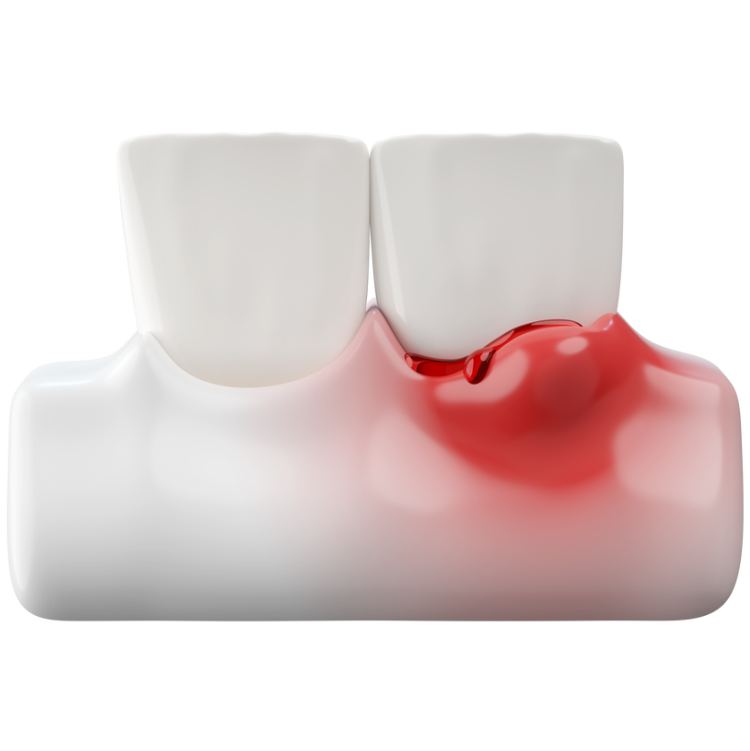
Self-Assessment: Are You at Risk for Gum Disease?
Early symptoms of periodontal disease can be subtle, but a simple self-check can help you gauge your gum health. Below are key questions to determine if you need a professional evaluation:
- Do your gums bleed when brushing or flossing? Bleeding is a common sign of gingivitis or early periodontal disease, often caused by plaque buildup.
- Do you have persistent bad breath or a bad taste in your mouth? Ongoing bad breath, even with regular brushing, may indicate bacterial activity linked to periodontal disease.
- Are your gums red, swollen, or tender to the touch? Healthy gums are pink and firm; swelling or pain may signal inflammation.
- Do your teeth feel loose or uncomfortable when chewing? Periodontal disease can damage supporting structures, causing tooth instability.
- Have your gums receded, making your teeth appear longer? Gum recession can expose tooth roots, increasing sensitivity and infection risk.
- Have you noticed wider gaps between teeth or shifting teeth? Damage to periodontal tissues can alter tooth alignment.
Next Steps: If you answered “yes” to more than one of these questions, consult a dentist promptly for a comprehensive examination. Early detection of periodontal disease significantly improves treatment success and prevents severe complications.
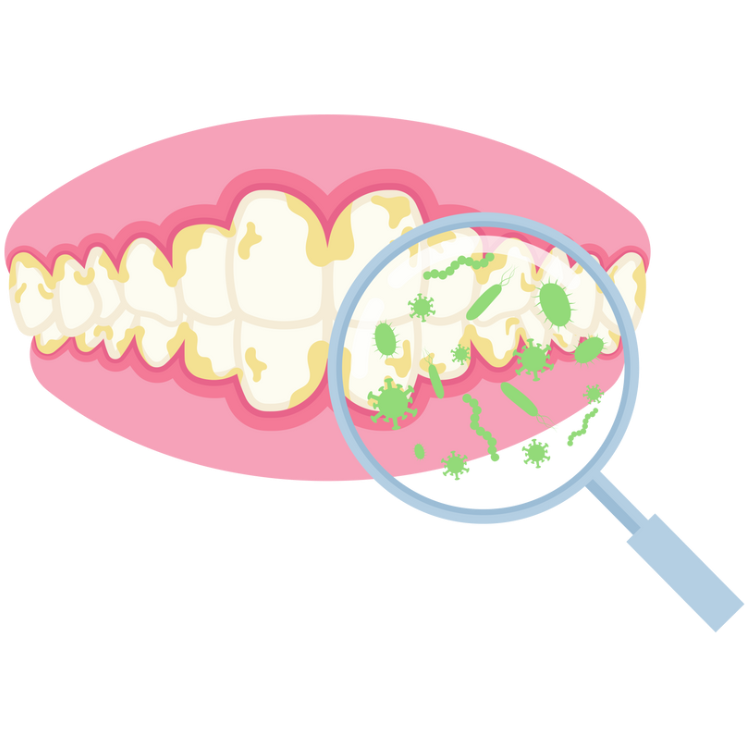
Preventing Gum Disease: Building Healthy Oral Habits
Preventing gum disease is far easier than treating it. Below are expert-backed daily care tips to maintain healthy gums and teeth:
Consistent Oral Hygiene Routine
- Proper Brushing: Brush twice daily for at least two minutes using a soft-bristled toothbrush, angling it at 45 degrees to gently clean along the gumline. Avoid aggressive brushing, which can harm gums.
- Flossing or Interdental Brushes: Use dental floss or interdental brushes daily to remove food particles and plaque from between teeth, preventing tartar formation.
- Antibacterial Mouthwash: Rinse with a mouthwash containing antiseptic agents (e.g., chlorhexidine) to reduce oral bacteria.
Avoid Smoking and Excessive Alcohol
- Quit Smoking: Smoking is a major risk factor for periodontal disease. Quitting can significantly improve gum health and treatment outcomes.
- Limit Alcohol: Excessive alcohol consumption can weaken immunity, increasing the risk of periodontitis.
Balanced Diet for Oral Health
- Vitamin C Intake: Foods rich in vitamin C (e.g., oranges, kiwis, bell peppers) strengthen gum tissue and combat inflammation.
- Calcium and Vitamin D: Dairy products, leafy greens, and fish support alveolar bone health, stabilizing teeth.
- Reduce Sugar Intake: Minimize sugary foods and drinks to lower the risk of plaque buildup.
Stress Management
Chronic stress weakens the immune system, heightening periodontal disease risk. Incorporate stress-relief practices like meditation, yoga, or regular exercise.
Professional Tools
Consider investing in an electric toothbrush or water flosser to enhance cleaning efficiency, especially for hard-to-reach areas like interdental spaces and back teeth.
Regular Dental Checkups
Schedule professional dental exams and cleanings every six months to detect and remove tartar early, preventing periodontal disease progression.
*Prevention Tip: Beyond daily care, discuss with your dentist the use of periodontal health monitoring tools, such as periodontal probes to measure pocket depth, to ensure stable gum health. Adopting these habits not only prevents periodontal disease but also enhances overall oral health, giving you a confident smile!
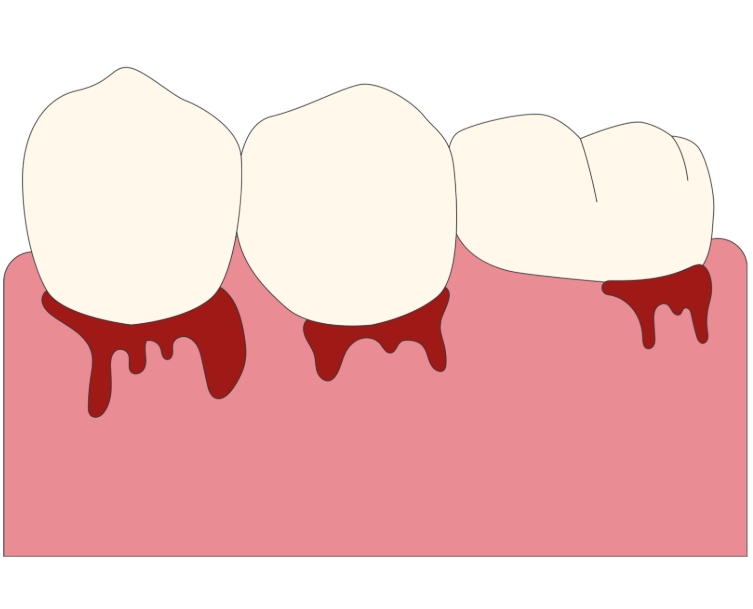
Gum Disease Treatment Guide
The treatment of gum disease is tailored to the severity of the condition, ranging from non-invasive early interventions to advanced surgical procedures. A professional dental team can provide comprehensive solutions to restore your gum health. Below are the treatment options for different stages, along with post-treatment care recommendations to ensure optimal recovery.
Early-Stage Treatment: Professional Cleaning and Basic Care
Early periodontal disease, typically gingivitis, can be effectively managed with non-surgical methods focused on removing plaque and tartar to restore gum health:
Professional Tartar Removal
- Dentists use ultrasonic scalers or manual tools to thoroughly remove plaque and tartar from tooth surfaces and along the gumline.
- This procedure is typically painless and can be completed in a single visit, ideal for patients with early gingivitis.
- Effect: Significantly reduces inflammation, restoring the gums’ pink color and firmness.
Personalized Oral Hygiene Guidance
- Dentists or dental hygienists teach proper brushing and flossing techniques, such as the Modified Bass Technique, to ensure effective gumline cleaning.
- Recommendations include using appropriate oral care products, like soft-bristled toothbrushes, antibacterial mouthwashes, or interdental brushes, to enhance daily hygiene.
- For smokers or those with other risk factors, dentists provide smoking cessation advice or lifestyle adjustment guidance.
*Suitable For: Patients with mild gum redness or bleeding during brushing, typically in the early stages of periodontal disease.

Moderate to Advanced Treatment: Surgical and Non-Surgical Options
When gum disease progresses to moderate or severe periodontitis, damage to periodontal tissues (such as alveolar bone and ligaments) requires more advanced interventions to control the condition and repair damage:
Non-Surgical Treatment: Scaling and Root Planing
Scaling and Root Planing is a deep-cleaning technique removes tartar and bacterial toxins below the gumline while smoothing the root surface to promote gum reattachment.
Process:
- Local Anesthesia: Ensures a comfortable, pain-free procedure.
- Deep Cleaning: Uses ultrasonic or manual tools to thoroughly remove tartar and bacteria from periodontal pockets.
- Root Planing: Smooths the root surface to reduce bacterial adhesion and encourage gum healing.
Effect: Reduces periodontal pocket depth, alleviates inflammation, and prevents further disease progression.
Advantages: Non-invasive, with a short recovery period, suitable for moderate periodontitis.
Surgical Treatment
- Flap Surgery: For patients with deep periodontal pockets or severe bone loss, the dentist lifts the gums to remove deep tartar and repair damaged tissue, then sutures the gums back in place.
- Bone Grafting and Guided Tissue Regeneration: In cases of significant bone loss, biocompatible materials (e.g., synthetic or autogenous bone) are used to stimulate bone regeneration and restore tooth stability.
- Soft Tissue Grafting: For patients with gum recession, healthy tissue is taken from another part of the mouth (e.g., the palate) and grafted to the affected area to improve aesthetics and protect tooth roots.
- Laser-Assisted Treatment: Lasers precisely remove diseased tissue, reducing bleeding and discomfort while accelerating healing.
Adjunctive Therapies
- Antibiotic Treatment: Local or oral antibiotics (e.g., tetracycline or metronidazole) control persistent infections, especially in aggressive periodontitis cases.
- Antibacterial Gels or Chips: Antibacterial agents are placed directly into periodontal pockets for sustained release to eliminate bacteria.
*Suitable For: Patients with periodontal pocket depths exceeding 4mm, tooth mobility, or alveolar bone loss.
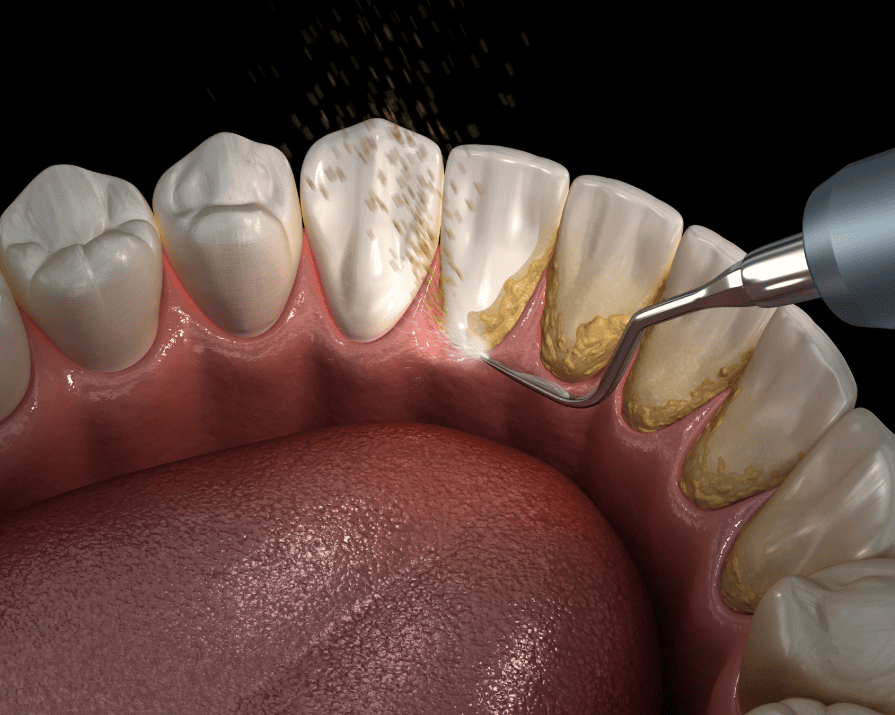
Deep Cleaning: Detailed Steps and Effects of Scaling and Root Planing
Scaling and root planing is a cornerstone treatment for moderate periodontal disease, restoring periodontal health through precise procedures. Below are the detailed steps and expected outcomes:
- Local Anesthesia: A local anesthetic (e.g., lidocaine) is used to numb the treatment area, ensuring a pain-free and comfortable experience. Depending on patient sensitivity, the dentist may offer sedation options to alleviate anxiety.
- Tartar and Bacteria Removal: Ultrasonic scalers or manual instruments are used to precisely remove tartar and bacterial biofilm from below the gumline. Deep periodontal pockets are thoroughly cleaned to eliminate all sources of infection.
- Root Planing: The root surface is smoothed to remove rough areas, reducing the likelihood of bacterial reattachment. This promotes reattachment of gum tissue to the root, reducing periodontal pocket depth.
- Post-Treatment Evaluation: The dentist assesses the cleaning results and may use a periodontal probe to measure pocket depth, confirming inflammation control.
Expected Outcomes:
- Reduced Inflammation: Significant improvement in gum redness and bleeding.
- Smaller Periodontal Pockets: Decreased pocket depth reduces spaces where bacteria can hide.
- Stabilized Teeth: Reduced risk of tooth mobility, improving chewing function.
- Long-Term Health: Lays the foundation for ongoing prevention and maintenance.
*Note: Mild gum sensitivity may occur post-treatment, lasting a few days. Dentists typically recommend using a gentle mouthwash and avoiding irritating foods.

Post-Treatment Care: Maintaining Long-Term Periodontal Health
Successful periodontal treatment requires ongoing care and monitoring to prevent recurrence and ensure the long-term health of gums and alveolar bone:
Regular Follow-Ups and Professional Cleanings
- Schedule dental checkups every 3–6 months, with frequency adjusted based on periodontal condition.
- Professional cleanings remove newly formed tartar, keeping periodontal pockets clean.
- Periodontal probes are used to monitor pocket depth, ensuring treatment stability.
Consistent Oral Hygiene
- Brush twice daily with a soft-bristled toothbrush and floss or use interdental brushes once daily to prevent plaque buildup.
- Use antibacterial mouthwash (e.g., chlorhexidine-based) or a water flosser to enhance cleaning.
- Replace your toothbrush every 3 months to maintain cleaning efficiency.
Diet and Lifestyle Adjustments
- Healing-Promoting Diet: Consume foods rich in vitamin C (oranges, strawberries), vitamin K (spinach, kale), and Omega-3 fatty acids (salmon, nuts) to support gum repair and reduce inflammation.
- Avoid Irritants: Limit spicy, acidic, or hard foods to avoid aggravating post-treatment gums.
- Smoking Cessation Support: Smoking delays healing and increases recurrence risk; dentists can provide cessation counseling or resources.
Monitoring Overall Health
- For patients with diabetes or other chronic conditions, collaborate with a physician to manage blood sugar or other health markers to reduce recurrence risk.
- Regularly monitor blood pressure and cardiovascular health, as periodontal disease is linked to systemic inflammation.
Patient Education and Support
- Attend dental health workshops or seminars offered by your dentist to learn the latest care techniques.
- Use dental apps or reminders to ensure timely brushing, flossing, and follow-up appointments.
Care Tip: For the first two weeks post-treatment, avoid using straws or engaging in strenuous exercise to prevent disrupting gum healing. Contact your dentist immediately if persistent pain or unusual symptoms occur. Consistent long-term care will significantly improve your periodontal health, boosting your confidence and smile!
Conclusion: Take Action Now to Protect Your Oral and Overall Health
Gum disease not only affects your smile but can also impact cardiovascular health, diabetes management, and overall quality of life. By understanding its causes, detecting it early, pursuing professional treatment, and maintaining consistent care, you can effectively prevent and manage periodontal disease. Don’t let a hidden oral health crisis compromise your well-being! Schedule a dental checkup today to take charge of your gum and tooth health. With good oral hygiene habits and professional treatment, you’ll achieve a confident smile and a healthier life!
🦷 Protect Your Gum Health and Restore Your Confident Smile!
📍 Whether you’re concerned about bleeding gums, bad breath, or loose teeth, or simply want to prevent gum disease, the expert team at Diestel & Partners Dental Clinic offers personalized periodontal assessments and treatment plans to restore healthy gums and safeguard your oral and overall health!
Our Periodontal Services Include:
- Comprehensive Oral Evaluation: Utilizing advanced 3D imaging technology for precise diagnosis of periodontal disease severity, ensuring targeted treatment plans.
- Personalized Treatment Plans: From professional cleanings to scaling and root planing or surgical interventions, tailored to your condition with transparent explanations of procedures and costs.
- Long-Term Care Guidance: Professional oral hygiene techniques and dietary recommendations to prevent periodontal disease recurrence and maintain a healthy smile.
Why Choose Us?
- ✅ Expert Periodontal Team: Led by experienced periodontal specialists with extensive clinical expertise, ensuring effective and safe treatments.
- 🖥️ Cutting-Edge Technology: Employing laser-assisted treatments and ultrasonic scaling for efficient, comfortable, and rapid recovery.
- 🌍 International Standards: Using high-quality medical materials that meet global dental standards for lasting results.
- 🤝 Multilingual Care: Offering consultations in Cantonese, Mandarin, and English to accommodate local and international patients.
Take Action Now to Protect Your Gum Health!
Frequently Asked Questions
Questions about gum disease often leave patients confused. Below are detailed answers to common queries to help you better understand its management and treatment:
Can Brushing Hard Prevent Gum Disease?
Many believe that brushing hard thoroughly cleans teeth and prevents gum disease, but this is a misconception. Overly aggressive brushing can damage gum tissue, leading to recession or sensitivity, and may even worsen inflammation.
Correct Brushing Techniques:
- Use a soft-bristled toothbrush and gently brush at a 45-degree angle along the gumline using the Modified Bass Technique (small circular motions).
- Brush twice daily for at least 2 minutes, paired with daily flossing or interdental brushes to clean between teeth.
- If gums are inflamed, consult your dentist for suitable tools, such as an electric toothbrush or anti-sensitivity toothpaste.
Tip: Brush gently and patiently, focusing on covering all tooth surfaces rather than scrubbing forcefully.
Is Gum Disease Contagious?
Gum disease itself is not contagious, but the bacteria causing it (e.g., periodontal pathogens) can spread through saliva via activities like kissing, sharing utensils, or toothbrushes. These bacteria may temporarily colonize a healthy mouth, but whether they trigger periodontal disease depends on individual immunity, oral hygiene, and genetic factors.
Prevention Tips:
- Avoid sharing utensils, toothbrushes, or other personal items with someone who has periodontal disease.
- Maintain good oral hygiene and use antibacterial mouthwash regularly to reduce bacterial buildup.
- If your partner or family member has periodontal disease, both parties should undergo regular dental checkups for early detection.
Tip: A healthy lifestyle (e.g., avoiding smoking, balanced diet) boosts immunity, lowering the risk of bacteria causing periodontal disease.
Is Gum Disease Treatment Expensive?
The cost of gum disease treatment varies based on the severity of the condition, the type of treatment, and the quality of the dental clinic. Below is an overview of common treatment costs:
- Early Treatment (e.g., Professional Cleaning): Typically lower-cost, depending on the clinic’s fee structure.
- Scaling and Root Planing: Non-surgical treatment for moderate periodontitis may cost a few thousand HKD, depending on the number of periodontal pockets and sessions required.
- Surgical Treatments (e.g., Flap Surgery, Bone Grafting): More expensive, ranging from a few thousand to tens of thousands of HKD, depending on the procedure’s scope, materials used, and the dentist’s expertise.
- Influencing Factors: Costs may increase with adjunctive therapies like laser treatment or antibiotics.
- Recommendation: Discuss detailed cost breakdowns with your dentist before treatment, confirming whether follow-up visits and care are included. Some clinics offer payment plans or insurance coverage to ease financial burdens.
Tip: Investing in periodontal treatment is a long-term benefit for oral and overall health, and early intervention can prevent costlier restorative procedures.
Do All Gum Disease Patients Need Flap Surgery?
Not all patients with gum disease require flap surgery. This procedure is reserved for moderate to severe periodontitis cases, particularly in the following scenarios:
- Periodontal pockets deeper than 5mm where non-surgical treatments (e.g., scaling and root planing) cannot effectively remove deep tartar.
- Severe damage to alveolar bone or periodontal tissues requiring repair to stabilize teeth.
- Persistent gum inflammation or uncontrolled bacterial infection in periodontal pockets.
- Early to Moderate Cases: Most can be managed effectively with professional cleanings, scaling and root planing, or antibiotics, without surgery.
- Surgical Necessity: Dentists assess the need for flap surgery through X-rays, periodontal probe measurements, and clinical evaluations. It is typically a last resort for severe periodontitis.
- Alternatives: Newer techniques, such as laser therapy or guided tissue regeneration, may replace flap surgery in some cases, offering less invasiveness and faster recovery.
- Recommendation: Communicate thoroughly with your dentist to understand your condition’s severity and the most suitable treatment plan.
Tip: Regular checkups can detect periodontal issues early, preventing the need for surgical intervention.
Disclaimer
The information provided on this website is for general informational purposes only, intended to offer basic knowledge about dental health and procedures. This content is not a substitute for professional dental advice, diagnosis, or treatment. For any dental concerns or conditions, always consult a licensed dentist to receive appropriate medical advice and treatment plans. Diestel & Partners Dental Clinic and its affiliates are not liable for any direct or indirect damages resulting from the use of information on this website. This website may include external links for convenience; however, Diestel & Partners Dental Clinic does not endorse or take responsibility for the content or accuracy of third-party websites.
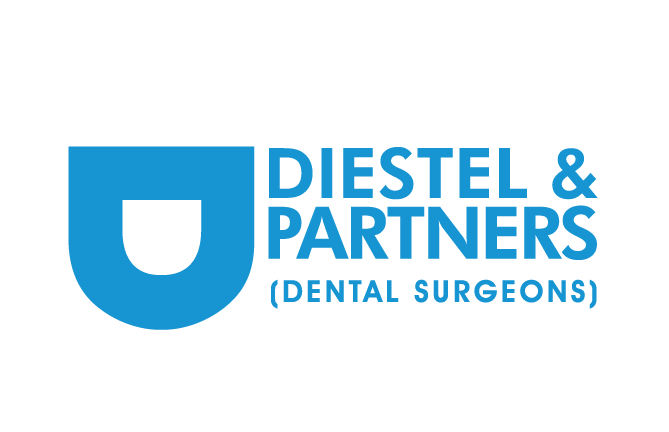
Diestel & Partners - Your Trusted Dental Care!
Our expert team is here for emergency and routine care to keep your smile healthy. Call or WhatsApp us today!
- Emergency Contact: +852 2522 2099
- After Hours: +852 6071 4530
- WhatsApp: +852 9786 5178
